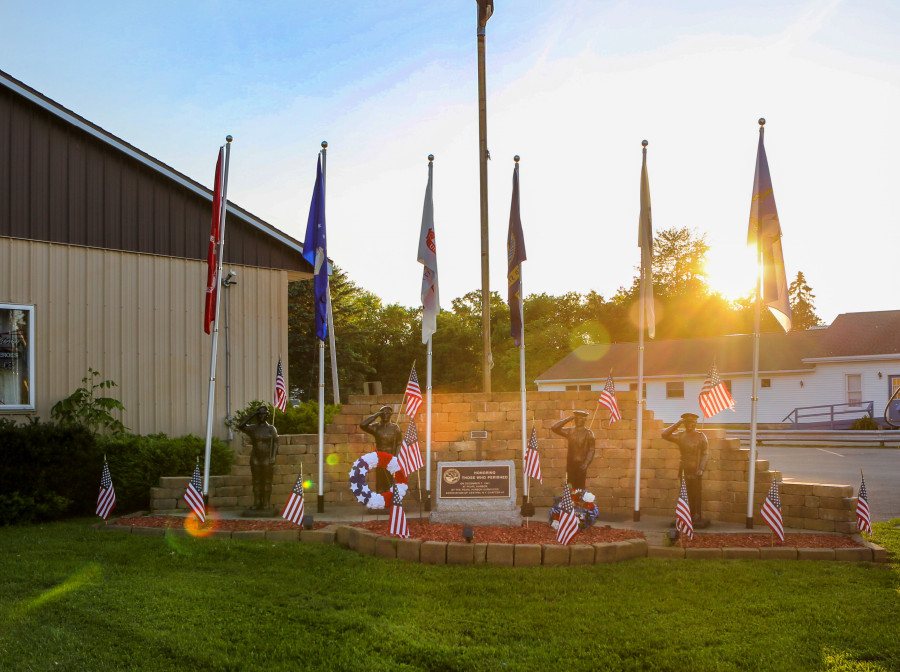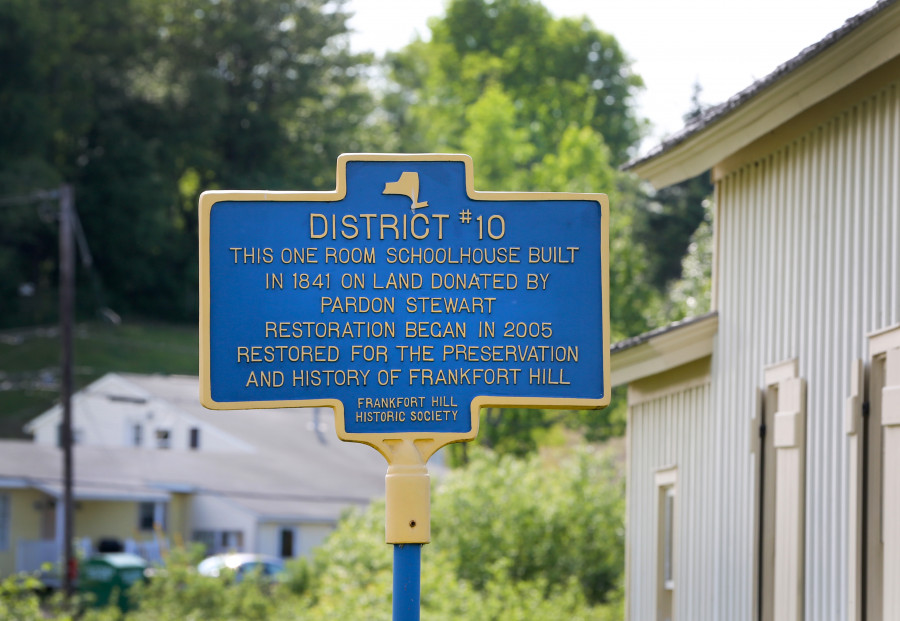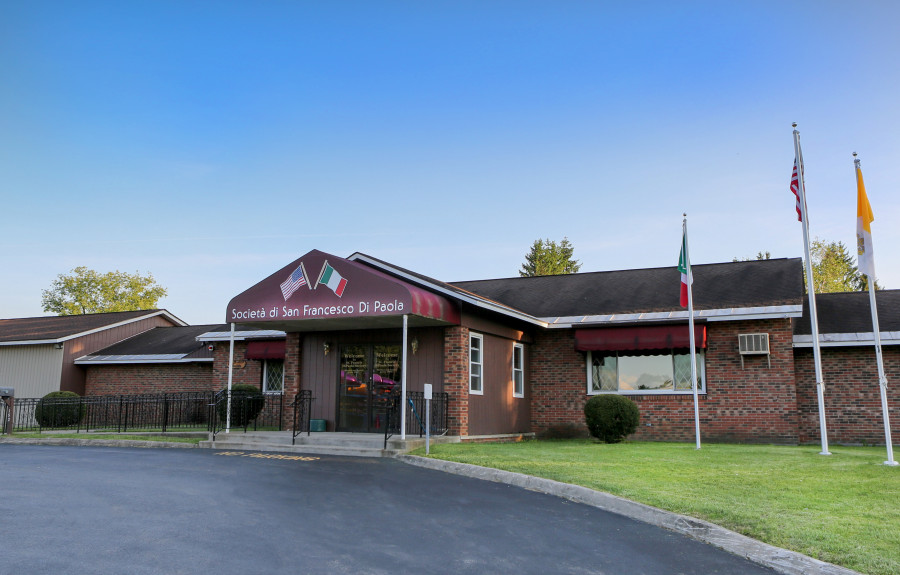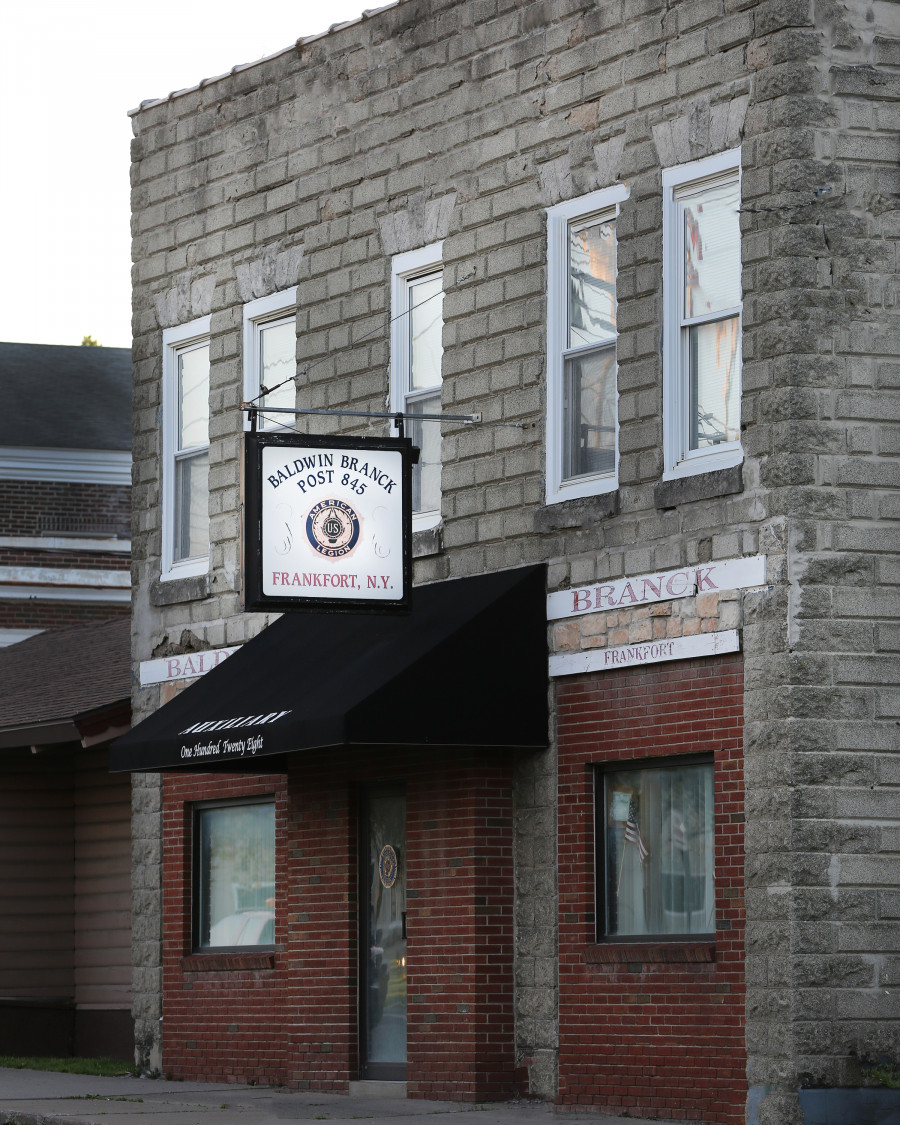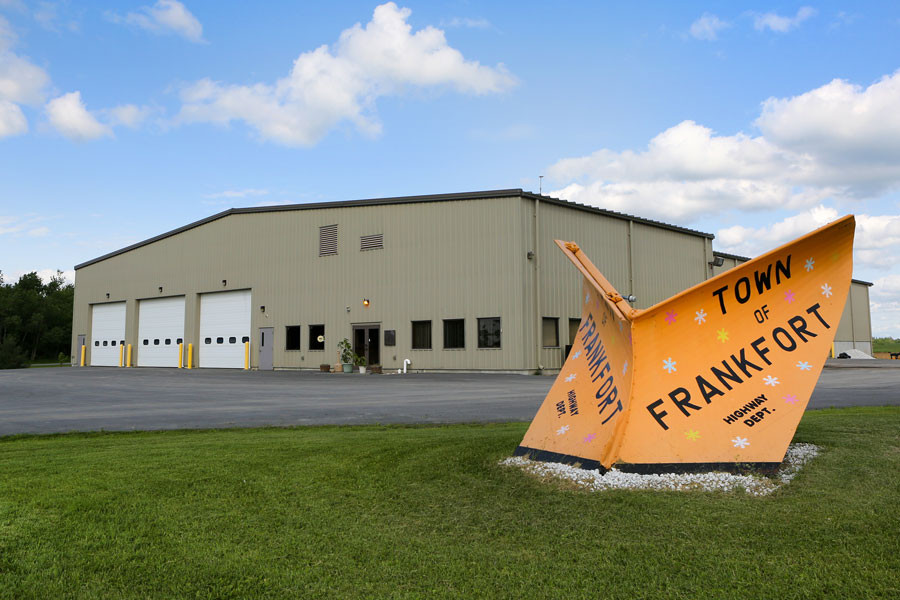Early History of the Town of Frankfort
Town of Frankfort is located in the southern section of Herkimer County. The land on which the present village stands was once the land of the Mohawk Indian Tribe. The land was bought by the Dutch who established patents encompassing a large area in the Town of Frankfort.
The First permanent settler was Jacob Folts, who had come to America in 1710 and settled here after purchasing lot#3 of the Burnetsfield Patent in 1723. In 1796 Major Warner Folts built the Folts Homestead on the land.
Another early settler was Lawrence Frank, for whom our town was named. Early pioneers were German immigrants, who were called Palantines because they came from the Lower Palatinate of the Rhine River. They settled in the Mohawk Valley prior to the Revolutionary War, building mills on the river and creeks. By 1757 there were saw and grist mills in the area but were burned during the French and Indian War raids. Unfortunately the area had very little time to rebuild before being totally destroyed during the Revolutionary War.
Regrowth began when post-revolutionary settlers came from New England. They began to settle at points south and west, and in a few years the whole town was settled. In about 1800, several Welsh families settled in the western limits of the town, this area became known as "Welsh Bush."
Howard's Bush, now the Frankfort Center, was so named for the family named Howard who located there.
John Hollister built a saw mill on Moyer Creek in 1794 and the following year he built a tavern. In 1795 another tavern was opened one half mile west of the present village by John Meyer.
The Town of Frankfort was set off from the Town German Flatts by an act of the Legislature on February 5, 1796. At the time of its incorporation, the western boundary of the town was at what is now the foot of Genessee Street in Utica. A state road was established between Utica and Schenectady by an act of Legislature in 1798. This road ran along the south side of the river through Frankfort. In 1850 this road was converted into a plank road and was Mohawk Plank Road, this of course now being Old 5s. In about 1825, the Legislature appointed commissioners to build a road from Frankfort to Litchfield traveling along the Moyer Creek Gulf, now known as the Gorge Road.
The area which is now the Village of Frankfort grew slowly and by 1807 there were only seven houses, with four of these being made of logs. The Frankfort Woolen Factory was built in 1807 by Joseph Ingham of Schuyler and Joseph Collins of Frankfort.
In 1808 Adam I. Campbell built a grist mill on Moye Creek and remained open until 1823 when the building was abandoned. Jacob Weaver opened a tavern in 1810. The following year Mr. Griswold established a tannery, which remained in operation until 1860. In 1814 Matthew and Michael Myers opened a store directly across from the woolen factory and in 1816 they also built an ashery on the bank of the Mohawk River.
In 1818 a joint stock company established the Frankfort Furnace bringing in their ore from the Clinton area and smelted it with charcoal. At one time this business employed thirty people and manufactured hollow ware, stoves and cast ploughs. This company was later abandoned.
A distillery opened in 1820. George W. Henry established a cowbell factory in 1823. This company thrived and continued to expand into other areas over the years. Also in this same year, another grist mill was built near the Hollister mill, lasting 30 years until destroyed by fire in 1853. A paper mill was erected on this same site in 1853 which was later converted to a distillery and then into a grist mill.
In 1840, Frankfort was the chief industrial center of the Mohawk Valley community, which at this time had a total population of 2,400. Frankfort consisted of 500 citizens and 100 dwellings including: a Dutch Reformed Church, a Baptist Church, eight stores, a woolen factory, a grist mill, a saw mill, a distillery and a tannery.
William Gates established the plant along the Erie Canal for the manufacturing of wooden matches. All work was done by hand until Mr. Gates invented machinery. He later added other buildings and by the 1850's the Match Factory was the largest employer in the town of Frankfort employing over 300 workers. The company joined with the Diamond Match Company and in 1900 moved to Oswego to be closer to its suppliers.
A paper company later took over the buildings and today there is a monument in the park commemorating the founding of the Match Factory.
In 1850 our community had a population of 1,150, Ilion had 812 , and the Valley had a total population of 4,688. The area was growing and businesses were very prosperous. In 1863 the Village of Frankfort was incorporated and by 1870 the total population of the Village was 1083. Frankfort Center, which was near the geographic center of the town was in 1877 a hamlet of about twelve houses. There was a union meeting house, a saw mill and a cheese factory.
West Frankfort was also called Four-Mile Grocery because it was about four miles east of Utica. By 1878, this area boasted of a hotel, a store, some mechanics' shops, and about twelve houses.
East Frankfort was at one time known as McGowansville, after Archibald McGowan. He settled in this area, establishing a dry dock and a store along the Erie Canal in 1857. Mr. McGowan was very active in the community. He served not only as the supervisor in the town for several years but also served two terms on the assembly and as a senator.
In 1883 the village donated $75,000 worth of real estate to the West Shore Railroad to insure that they would settle in Frankfort. Vigorous bidding occurred across the state, but Frankfort won. The shops set up by the railroad employed several hundred men year round with over 200 people employed between 1883 and 1900. The building of the railroad inspired Italian immigrants to come to Frankfort. The influx of immigrants continued until 1924, when the shops were closed.

